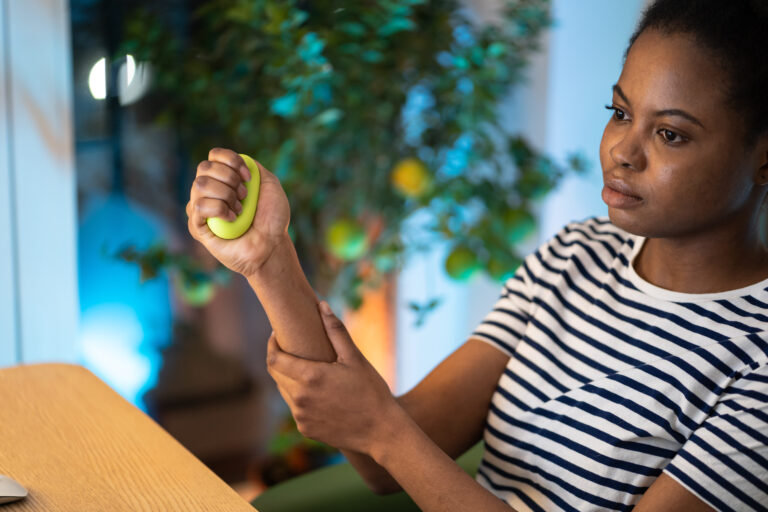Vaginismus is a condition that affects the muscles of the pelvic floor, leading to involuntary spasms or tightness. For those who have been diagnosed with vaginismus or suspect they might have it, understanding the condition, its causes, and treatment options is essential.
Understanding Vaginismus and Pelvic Anatomy
To comprehend vaginismus, it’s important to first understand the anatomy of the pelvis. The pelvis is made up of several bones, including the ilium (the large wing-shaped bones), the pubic bone at the front, and the sacrum, which resembles a cobra head and connects to the tailbone. The spine and hips are also closely linked to the pelvis, forming an interconnected system.
Beneath this bony structure lies the pelvic floor, a group of muscles that attach from the pubic bone to the tailbone. These muscles provide support to the pelvic organs, control bladder and bowel movements, and play a role in sexual function. When these muscles become overly tight or go into spasm, the condition is termed vaginismus.
Causes of Vaginismus
Structural and Alignment Issues
One of the primary contributors to vaginismus is a change in the alignment of the pelvis, hips, and spine. Misalignments can occur due to:
- Past injuries, such as falls on the tailbone or hip injuries.
- Chronic back issues.
- Sports-related trauma.
When the alignment is altered, the pelvic floor muscles may overcompensate, becoming tight and leading to vaginismus.
Chronic Inflammatory Conditions
Chronic inflammation in or around the pelvic area can also lead to tight pelvic floor muscles. This includes conditions such as:
- Recurrent urinary tract infections (UTIs).
- Chronic yeast infections.
- Inflammatory conditions affecting the bladder, uterus, or gastrointestinal system.
Other Contributing Factors
Additional factors that may result in vaginismus include emotional or psychological stress, past trauma, or conditions causing habitual tension in the pelvic muscles.
Symptoms of Vaginismus
The primary symptom of vaginismus is pain during intercourse due to the inability of the pelvic floor muscles to relax. However, vaginismus can present with a variety of other symptoms, such as:
- Difficulty with insertion: Pain or inability to insert tampons or undergo gynecological examinations.
- Constipation: Difficulty with bowel movements due to tightness in the pelvic floor.
- Urinary symptoms: Pain during urination, urinary hesitancy, or frequent urination.
- Pelvic discomfort: A sensation of fullness or discomfort when sitting for prolonged periods.
- Associated pain: Issues such as lower back pain, hip discomfort, sacroiliac joint problems, or pubic bone pain.
Some individuals might also experience symptoms resembling a persistent UTI or yeast infection despite a lack of infection.

How is Vaginismus Treated?
The treatment of vaginismus involves addressing both the underlying causes and the symptoms. A comprehensive approach often yields the best results.
Restoring Alignment
Given that changes in pelvic alignment can contribute to vaginismus, correcting these misalignments is a critical step. Physical therapists specializing in pelvic health often:
- Work on the surrounding musculature, such as the hips and spine, to rebalance the system.
- Use manual techniques to release tension in the pelvic floor muscles.
Reducing Muscle Tension
Techniques to reduce tension in the pelvic floor include:
- Trigger point release: Gentle pressure to release spasms in the muscles.
- Myofascial release: Stretching and mobilizing the fascia to improve muscle flexibility.
- Biofeedback: Training the muscles to relax through real-time monitoring.
- Pelvic floor exercises: Guided routines to promote relaxation and control of the muscles.
Retraining Muscle Function
Once the tension in the pelvic floor has been reduced, it’s important to retrain the muscles. Dysfunctional muscles that haven’t been working properly for months or years require rehabilitation to regain their strength and coordination. This involves:
- Neuromuscular re-education: Teaching the muscles how to function effectively in coordination with the hips, pelvis, and spine.
- Strengthening exercises: Building up the muscles to ensure long-term functionality.
Psychological Support
For some individuals, vaginismus may have psychological components, such as anxiety or trauma. In these cases, combining physical therapy with counseling or therapy can be highly beneficial. Cognitive-behavioral therapy (CBT) and mindfulness techniques are often used to address emotional factors contributing to vaginismus.
Conclusion
Vaginismus is a treatable condition, but it requires a holistic approach that addresses both the physical and emotional aspects of the disorder. By restoring pelvic alignment, reducing muscle tension, and retraining muscle function, individuals can achieve significant relief and improved quality of life. If you suspect you have vaginismus or have been diagnosed, seeking help from a qualified healthcare provider or pelvic floor specialist is the first step toward recovery.
Also Read: How to Treat Sports Hernia & Athletic Pubalgia
I’m Hina Sheth. I have been treating complex orthopedics, sports and pelvic floor physical problems for over 25 years with amazing results. Now I want to bring my knowledge to the global community so I can spread my knowledge to you.
Our bodies are complex systems of 600 muscles and organs intertwined in a fascial system that all work together. Imbalances in this system such as trigger points, visceral and myofascial restrictions can lead to joint, pelvic, and organ issues.
Factors like nutrition, exercise, sleep, and stress play a crucial role. Unfortunately, our current healthcare model does not look at our bodies as a whole and oftentimes compartmentalize musculoskeletal injuries and dysfunctions.
At Rebalance, our goal is to holistically treat this complex system to restore harmony in the body. By addressing these imbalances, we help clients improve their overall health and well-being. Our vision is to empower individuals to create a healthier lifestyle for themselves.






